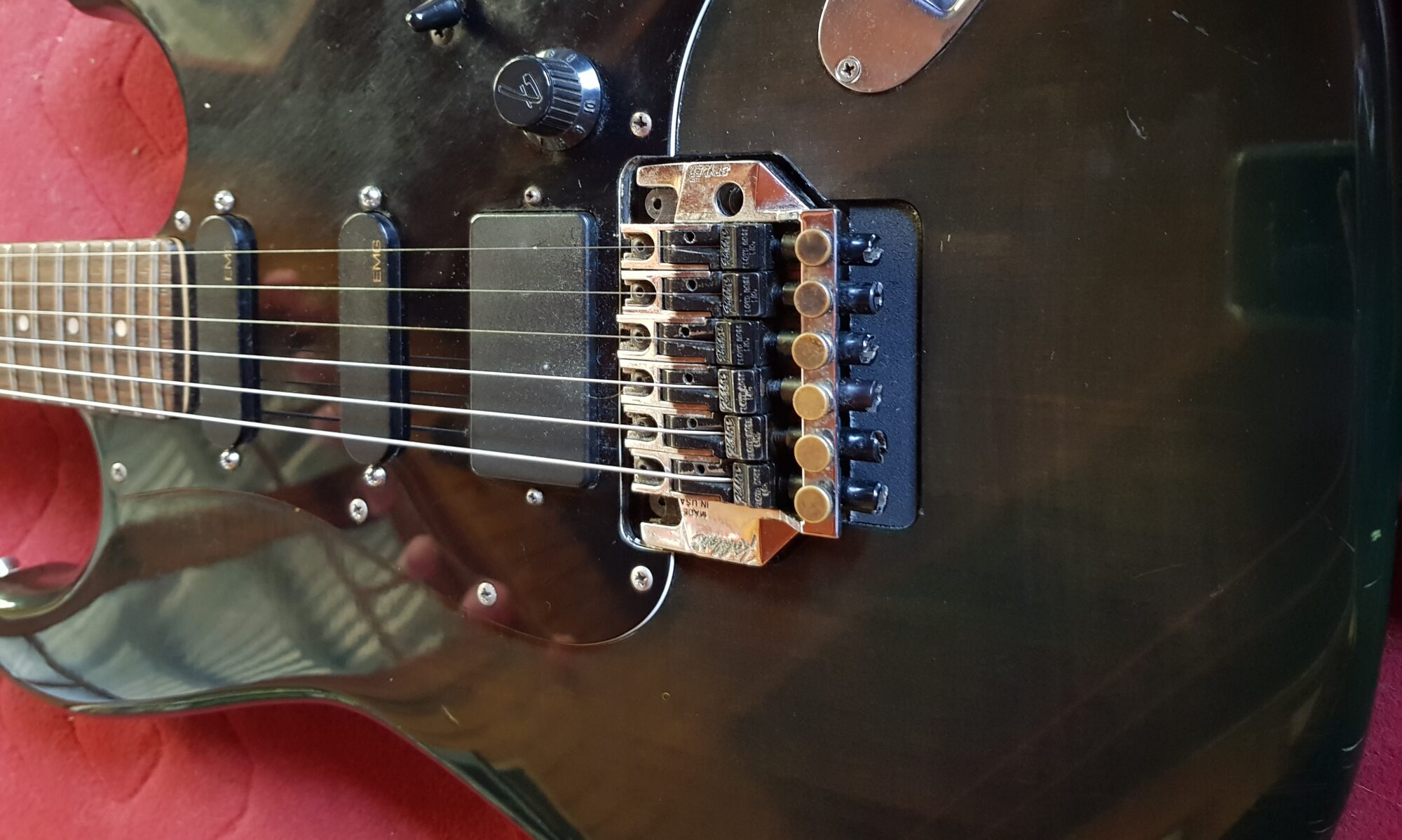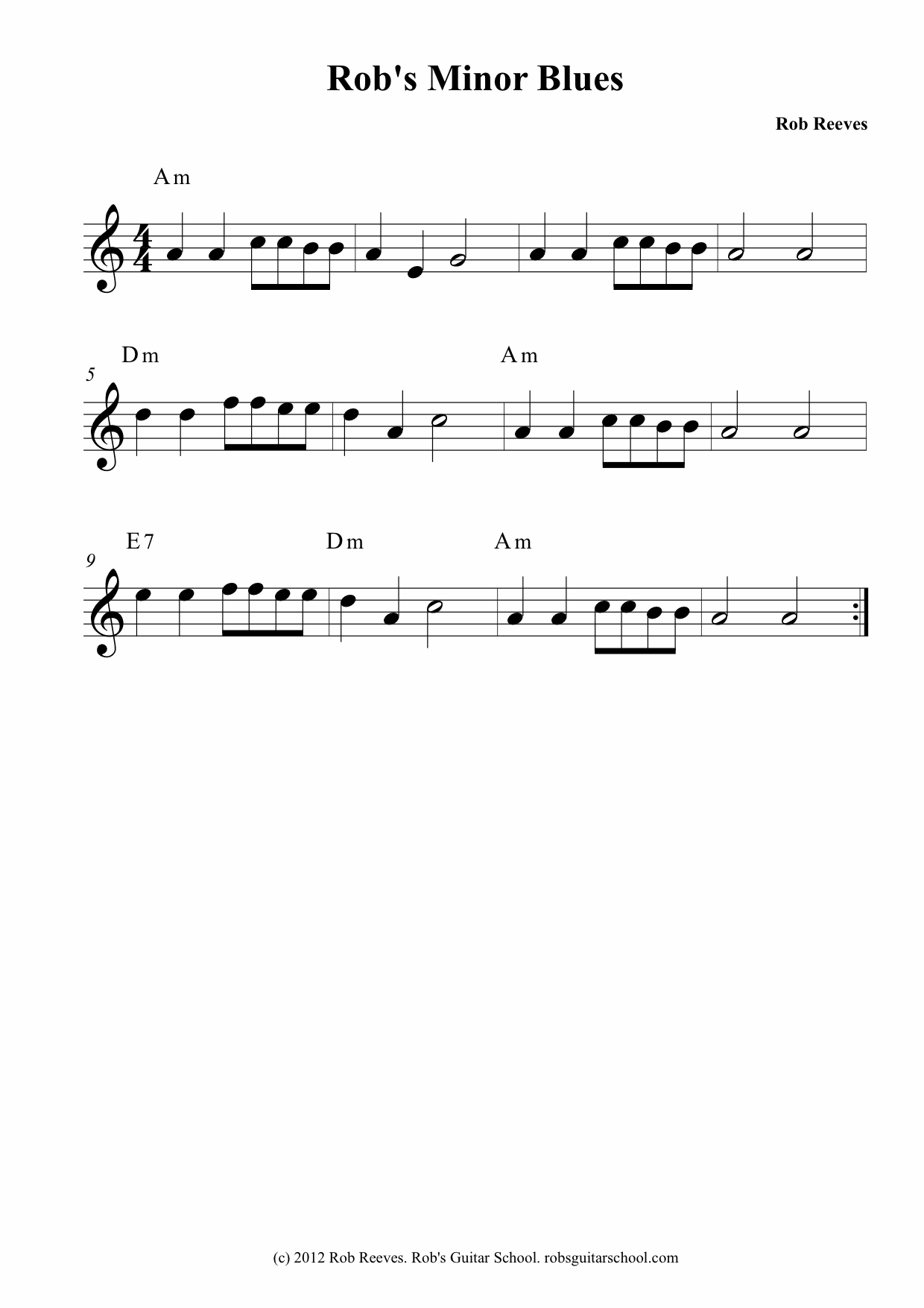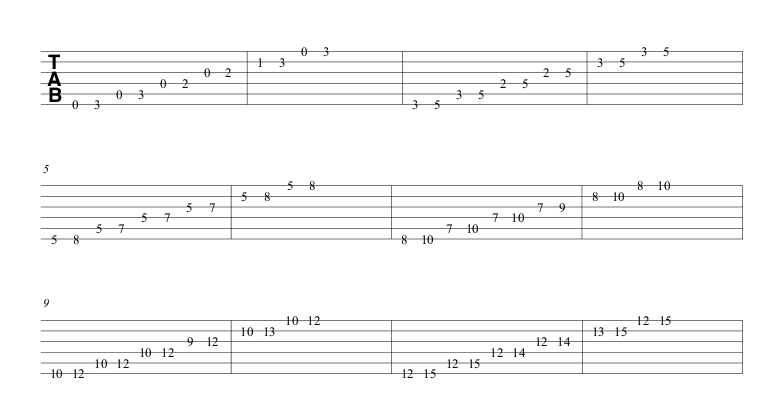Here is a blues in A. The basic form is executed with ninth and 13th chords, interspersed with bass runs outlining the 1st 3rd and 5th of each chord, with a chromatic run from 3rd to 5th. The solo style is constructed around each chord, using bends on the b3rd, and adding 2nd’s, 6th’s, 4ths and major thirds. There are minor pentatonic sequences, myxolidian sequences, and chord sequences. I tried to give extra attention to phrasing in this piece, climaxing in the second last chorus, with a sequence beyond the 12th fret, before a final chorus to recuperate in the 5th position.
Blues in E No. 1
Sculpting tone with flesh harmonics
Here’s a video lesson on how you can shape your tone by flesh harmonics. By allowing the flesh of your thumb or finger to also touch the string when you pick a note, you can access new dimensions of tone. Good tone starts with the instrument and your technique!
We’ll be discussing this at the “Talking about the Blues” workshop on Tuesday 12th January, at The Gap.
Practice Track – E minor Pentatonic
You can never have enough of the E minor pentatonic scale. So here is another practice track, built around an E boogie power chord. There is just one chord! The organ comes in over the top with an E7 #9, while the bass line features sliding or bending between minor and major third. So hit those bends in your solo, especially the minor third!
Another One for the Bass Players – E Blues
Here is another practice track for the bass players. It is an E 12 Bar blues. The rhythm part is played with all dominant 7th chords, while the lead guitar plays with the E minor pentatonic scale. Here are the chords:-
|E7 | | | |
|A7 | |E7 | |
|B7 |A7 |E7 |E7 |
Try constructing bass lines from your dominant 7th chord arpeggios. Add in the 6th for a classic blues bass line. For your runs, try the the myxolydian mode from the root of each chord.
Bass Practice Track – E Minor Pentatonic
I thought it would be cool for my bass students to play along with a track that I am working on for an album by “The Robert Bloodwood Experience”, which is the name of my blues and groove band. So I have taken out the bass and the vocals, leaving just the drums and guitars.
It is predominantly an E minor groove, occasionally changing to G and then to A. See if you can figure out where by listening. Play along using the E minor Pentatonic scale. Remember that simple with a good feel is often the best option for bass.
practicetrackversionNoBassNoVocals
Practice Track: A Minor Blues
Here is a practice track for beginning or intermediate guitarists to sharpen up their minor blues solos. The Key is A minor – so use the A minor Pentatonic. For a more sophisticated approach, you can also make excursions into the D minor Pentatonic over the D minor Chord. For the E7 chord, try an E minor pentatonic, with some half tone bending on the G! That will take the G up to a G# to match the chord tone in the E7 chord (E, G#, B, D)
Another approach is to use the A natural minor scale, switching to the A harmonic minor scale (or just bending the G’s to G#) over the E7. The tempo is slow and the rhythm is steady to give you plenty of scope for exploring.
|Am | | | |
|Dm | |Am | |
|E7 |Dm |Am | |
The chords are a standard blues progression, but in a modern style, there is no final E7 chord in bar 12. Instead you will hear four distinctive organ stabs to alert you that you are coming back to the top again.
Practice Track: A minor blues
The Blues form is one of the basic forms for jamming in rock, jazz, and of course blues. Here is a practice track to help get your chops up to speed on the A minor blues. The chord progression is a typical blues variant, with minor I and IV chords. Often a V chord appears in the last bar of a blues, however this final V chord is often omitted as in this case!
There are many possibilities for soloing over such a progression, a good starting point is the notes of the C major scale, which may also be referred to as the A natural minor scale, or the Aeolian mode of C. This gives us both a flat 9 (F) and a sharp 9 (G) to play over the E7 chord. Alternately, we can use the A minor pentatonic scale, which is in realty a subset of the C major notes, omitting the F and the B. Using the A minor pentatonic, be sure to try bending your G up a semitone on the E7, and try bending your D up a tone on the Am.
An alternative approach is to bass your playing around the chord arpeggios. We can use the Am7 arpeggio over the Am, the Dm7 arpeggio over the Dm, and the E7 arpeggio over the E7 chord.
We can drop in some colour notes to our arpeggios, seconds work over all three chords, while a major sixth sounds good over the Dm (creating a minor sixth sound). We can drop a #5 (C) in on the E7 (creating an E7#5 sound).
Another possibility is to play with the A harmonic minor scale over the E7, where it has the necessary G# to match with the G# in the E7 chord. This give a little bit of a gypsy jazz flavour over the straight ahead rock backing. Harmonically, the harmonic minor can work over all the chords – try it out and see it you like it!
Here is the practice track. There are four repetitions of the progression. Play the tune over the first, then take two choruses for a solo, then play the tune again. You will hear the rhythm in the organ count you back to the top in each bar 12, which will help you know where you are in the progression, so you can pick up the tune in the right place again!
Practice Track: Finger Picking Blues
This practice track provides a finger style blues rhythm backing, ready for your improvisations using the E minor pentatonic scale. The chords are
||:E7 | |A7 | : ||
You can also try combining the E7 and A7 arpeggios over the appropriate chord, to augment the minor pentatonic. There is plenty of room for the so called “blue” notes in this style – the b3 (G), the b5 (Bb) and the b7 (D). Experiment with hammer on’s, pull offs, and combinations of hammer ons and pull offs, using them to lock into the triplet feel. Bends and reverse bends sound good on the b3 (G), the 4 (A) and the b7 (D), but stick to reverse bending the A on the A chord!
Play with these ideas, and ideas of your own, and explore what sounds good to you!
Finger Picking Blues Rhythm Track
Practice Track: Am D9 Funk
Here is a practice track for those wanting to polish up their soloing over a funk style A minor groove. The place to start with soloing over this groove, which alternates between Am7 and D9 is the A minor pentatonic scale. There are six fingerings of the A minor pentatonic scale which cover the entire fretboard. Practice in each of the fingerings until you know them all well, then practice going between pairs of fingerings, until you can play anywhere on the neck of the guitar!
Here are the six fingering patterns – notice that the first is identical to the sixth after making adjustment for the open strings.
The minor pentatonic approach is however just the beginning of what you can do. You can also try A natural and Dorian minor scales. Since Am and D7 are the ii and V chords of the G major scale, you can also use the G major scale. Try working off the A minor seventh and D7 or D9 arpeggios. You might also like to experiment with the B minor pentatonic scale and the E minor pentatonic scale, as both of these scales contain only notes from the G major scale. As always, let your ear be the judge!
Here is the practice track:
Practice track Am7-D9 funk groove
Enjoy!


